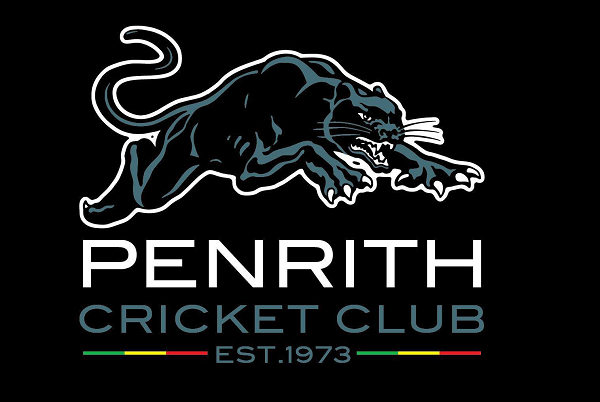Steve Frances - Penrith Cricket Club first grade player number 27
Penrith Cricket Club | February 13, 2023
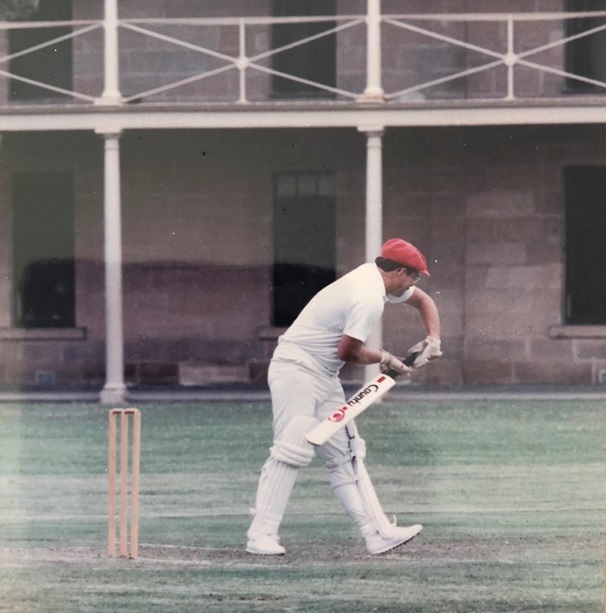
Steve Frances playing for NSW Army team v NSW Police at Victoria Barracks, Paddington in March 1987. He was caught behind off the bowling of former Penrith teammate, NSW Police Officer and Hawkesbury DCC cricketer Graham Price, for a modest score (perhaps 0).
Steve Frances is the proud owner of Penrith District Cricket Club cap number 27. He worked as a Medical Entomologist specialising in personal protection against mosquitoes. He worked at Sydney Uni for 4 years before joining the Royal Australian Medical Corps for 32 years, until retiring in October 2016. He played 23 first grade games for Nepean/Penrith and played 9 seasons there in Green Shield and 1-4th grade, then 3 seasons at Sydney Uni in 3-5th grade, before joining the new Campbeltown club for 5 seasons in 3-5th grades. He had 3 seasons in the Thailand Cricket League, Bangkok. He scored 273 runs in 1st grade, and a total of 5,249 during his 17 season career.
He thought he was the only medical entomologist to play grade cricket, but a doyen of the field, Professor Ian Mackerras (1898-1980), who was the first Director of the iconic Queensland Institute for Medical Research (QIMR) and played cricket for the ACT in the 1920’s, when working for the Commonwealth Scientific and Industrial Research (now known as CSIRO). Adam Morehouse, an
expert on ACT cricket history told him that in the 1920’s some games were played on weekdays, and players were sometimes selected if they were able to obtain leave from their public service jobs. Steve never met the good Professor, but I’m sure he enjoyed playing cricket whilst growing up in Queensland.
What year you were born?
1958
Can you remember you first game of cricket?
I was born in Sydney, but my dad was a manager for Woolworths, so we moved to Canberra in 1966. I played my first game for Turner CC in 1966 and scored 6 not out. We later moved to Griffith, where I played with Eastlake for 2 years, then Port Moresby in 1968.
Tell us briefly about your cricketing journey?
In 1969, we moved back to Sydney, and lived in Campbelltown. I played for East Campbelltown, then began playing with Bradbury Sherwood Cricket Club. I also started high school at Hurlstone Agricultural High School. At that time, it was an all-boys school, so sport was mostly cricket in summer and Rugby in winter. In 1973 I had the opportunity to try out for Nepean DCC Green Shield, being selected in their first ever team. I played with Nepean (changed to Penrith in 1978) first in second grade in September 1974, and in my second club game debuted in first grade. Due to work and study I moved to Sydney University for three seasons commencing in 1982, and then 5 seasons with the fledgling Campbelltown DCC (1985-1990). In 1992-94 I was posted to Bangkok, Thailand, and played in the Thailand Cricket League, with players of mixed skill from the sub-continent, Australia and England. I played for Royal Bangkok Sport Club in 1992, and British Club in 1993-1994.
In which grade and at what age did you make your debut in grade cricket?
I made my debut in second grade against Cumberland at Howell Oval, scoring 4, on 28 September 1974.
At what age did you make your first grade debut in grade cricket and can you remember how you performed in debut?
I’m the youngest Panther to debut in first grade at 16 years 188 days (Currently 93rd on a list of youngest on Debut. Interestingly, more than 30 younger players have made their debuts in first grade in the last 20 years or so), a month younger than more recent players Jordan Silk and Ryan Hackney. I scored 15 in my first match against Randwick at Howell on 7 October 1974.
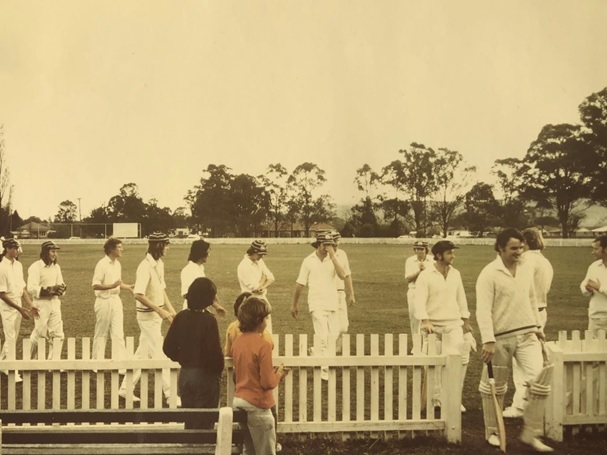
My first-grade debut
Howell Oval, 6 Oct 1974, Nepean DCC v Randwick CC. From left (Penrith Player Numbers). Neville Cheetham (18), Greg Gavin (12), Steve Frances (27), John Sparkes (30), Cal Parkinson (15), Robert Davis (16) Ron Hall (10), Bob Morris (9), Terry McGrath (22), Lyall Gardner (Randwick), Bill Knowles (Randwick), John Benaud (1), and Tony Carroll (2). Umpires: Arthur Watson and Rocky Harris.
Nepean 121 and 3-36 defeated Randwick 49. (Randwick had 2 Shield players, Alan Turner and Ron Crippen). Also, you can see that the player numbers a little a skew. John Sparkes (30) made his debut in Round 1 of 1974-75, me (27) round 2, the late Peter Mirkovic (23) round 3, the late Eric Thompson (21)
Photo: Patrick A. Frances
If you can share with our audience, how would you describe yourself as a cricketer?
I was a batsman and kept wickets when needed. Kept for one season in First Grade.
What were your strengths as a player?
Punctual.
What was your highest score in senior cricket?
I scored 103 for each of the clubs I played for. One in Green Shield for Penrith at Drummoyne, 3rds for Campbelltown at Raby 2, and 5th s for Sydney Uni against Parramatta. My highest first grade score was 41, playing against Randwick at SCG No 2.
What were your best bowling figures in senior cricket?
There is one poor batsman out there whom I dismissed. I clean bowled him for Penrith in a 3rd grade game at David Phillips Field no. 2. I think there may have been a Qantas jet flying into to Mascot. I did bowl many seasons of useful net offies (as we all did).
Who were the best three fast bowlers you have played against?
David Colley, clean bowled me at Mosman with a ball that swung away and cut back for a duck. I did play against him again in 1987 playing for Combined Services against The Primary Club of Australia at Dooralong, where I scored a couple off him.
Steve Taylor, played for North Sydney and was the quickest I faced.
Greg Rowell, played him in 1988, again for Combined Service. This was a renowned game when Combined Services were bowled out for 18, at Manly Oval. Greg was 18 years old and pretty quick, too good for the Defence team.
I played with Peter Clough at Penrith who also developed from a young fast bowler, lacking accuracy, to a devastating quick. I kept wickets to him for a season, and he hit the gloves hard, and was “lethal” in Sydney grade cricket during 1977-79. Peter relocated to Tasmania (later appointed as a member of Tasmania Cricket Hall of Fame) in 1978, and then WA for a solid first-class career.
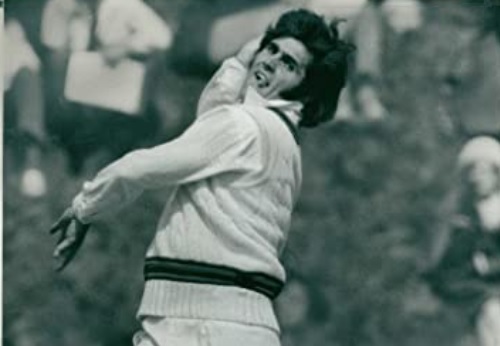
David Colley
Who were the best three spinners you have played against?
Tom Shiner. He also went to Hurlstone Ag High School but is 2 years younger than me. I played him in the nets at Penrith and Campbelltown, and he always fizzed the ball onto a length with good variations. He should have played at a higher level but was a below average fielder and was a certain no. 11 batter.
Kerry O’Keefe. I played my second game of 1st grade against St George, who were able to play their Test and Shield players. I can remember trying to imitate Skull’s bowling action growing up, and now I had the chance to face him. He was bowling nudes and got me lbw on a ball just missing leg, I thought.
Greg Matthews. I played a lot against him in high school representative matches and a few PG games. He was the most determined cricketer I played against. As a young schoolboy his ambition in life was to play for Australia. He was also the most gregarious person I ever met, occasionally seeing him in the city of Sydney night spots at all hours (you might ask, “What was I doing there?”). As we all know, he achieved his schoolboy goal. He could also sing and was heard doing a variation of Dire Straits “Sultans of Swing” while fielding at second slip.
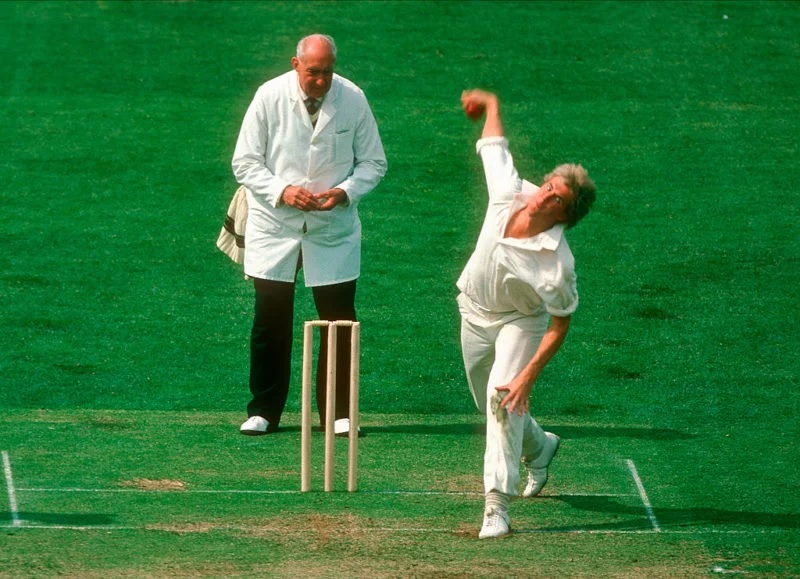
Kerry O'Keeffe
Who were the best 3 batsman you’ve played against?
Dirk Wellham was about the same age as me, and always scored runs in junior cricket against teams I was in. In 1975, our school was to play an Alan Davidson Shield game against Ashfield Boys High.
They had 9 players in Wests grade system, and Dirk was skipper. However, it rained and both
coaches decided a toss of the coin would decide the fixture. I won the coin toss and my school progressed, and Dirk and his team were not happy. In a first grade game in 1977, an 18 year Wellham scored a handy 30 odd not out, in ensuring Wests beat us.
Bob Simpson In 1977 we played against a Wests team that included the 42-year-old “Simmo”, an iconic player for Australia for many years, at Howell Oval. Mr Simpson scored 108, and only gave one chance when dropped by Frances, when on he was 87. A few weeks later the World Series Cricket concept was announced and nearly all of the Australian Test side were signed to WSC and were not selected for Australia. Bob Simpson was asked to Captain the ACB team in the Test series against India. Players like Steve Rixon, Peter Toohey and Allan Border were also given the opportunity in the Test team, during the WSC era.
Allan Border In 1975 we played a second grade game against Mosman, where a young AB (19 or 20 years old) dispatched our bowlers to all parts of Howell Oval. However, he scored most of his runs after his team had defeated us on first innings. It was a day with a hot westerly wind, and our team thought it was time for a beer, but the Mosman team were happy for us to remain chasing leather.
Later in a first grade “re draw” at Mosman Oval he repeated the dose. In 1977, after he had begun his first class career and was scoring plenty of runs for NSW, we encountered him again at Howell, where we got him for a modest 10. It was great to see him debut for Australia in 1978 and have a stellar career. An honour to have played against him. Former teammate Steve Small stated in 2010, that AB could have been Premier of his adopted state of Queensland, and if pulled over by the police for speeding, would be let off immediately.
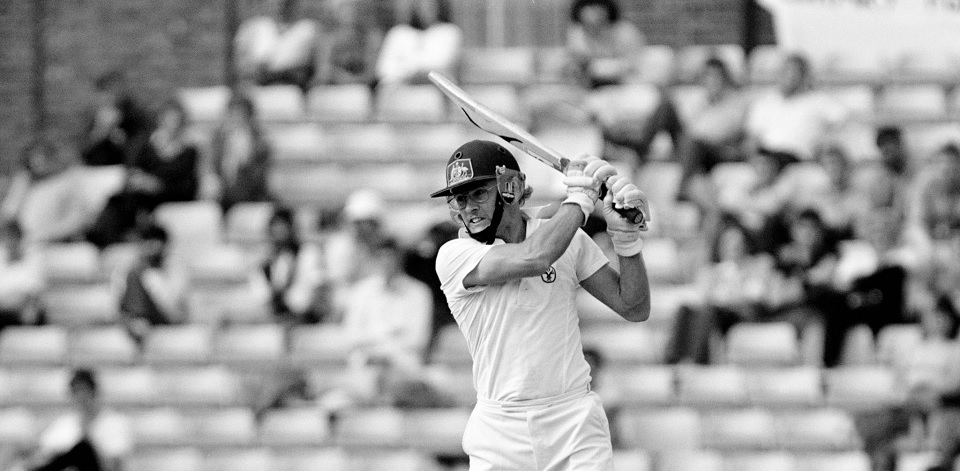
Dirk Wellham
Who played the best innings you’ve seen first hand playing with or against?
I recall a 1st grade game at Chatswood in 1975, where Rob Thomas scored 134 not out to win a one day fixture for Gordon against Nepean. The fine timing and boundary hitter was more like a modern T20 innings. In the same game Nepean opener, Tony Carroll was run out by skipper John Benaud for 99, after a dominant innings.
Was there any bowler in particular who whatever reason always seemed to cause you a few problems?
That must be a generic question, as many bowlers caused me problems. I remember playing 2nds against Randwick at Howell in 1980, and their curly headed left arm bowler, Mike Whitney, bowled half our team out, with late swinging inswingers. He wasn’t that quick in 1980 but bowled faster as he got older and got plenty of wickets in a great career.
Can you recall a time when you thought, wow, this is a step or two up from what you were used to?
When I was 14, I played in the same park team as Ray Thomson, whose brother Jeff was a NSW quick. Ray invited Jeff to practice one afternoon, and Jeff bowled to me in the nets. He must have landed all the deliveries on a hanky, and although bowling slowly, he was hard to pick up. I never got to play against Jeff when in Nepean 1st grade, and I think I got dropped to 2nds each time we played against Bankstown.
Who was the best wicket keeper you’ve seen firsthand playing with or against?
I got to play against 2 Test keepers, Steve Rixon and Greg Dyer. I think Greg was still improving as a schoolboy but had all the ball catching skills needed. I was surprised that he put a steak on each palm when he played to minimise bruising of his hands. He is now CEO of the Sydney Fish markets, and I wonder if he has developed a fish alternative to place in keeper’s inners.
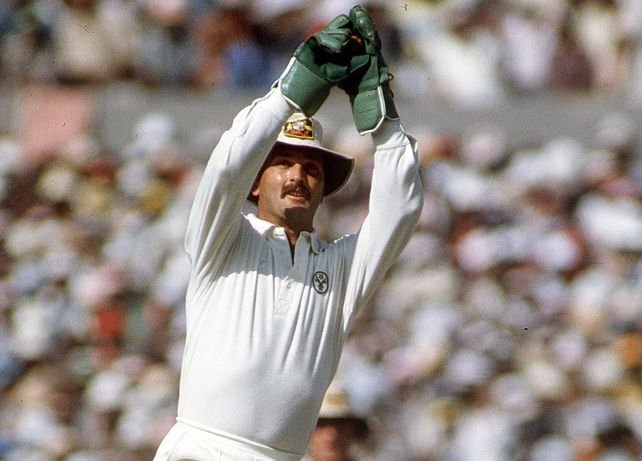
Greg Dyer
Who are the two players you admired most in terms of skills and competitive spirit in the competitions you played?
Greg Matthews and John Benaud.
Who was the best captain you had the good fortune to play with?
John Benaud. He was both a former Test player and NSW captain, when I played with him at Nepean. He knew the strengths and weaknesses of every opponent.
In January 1975, we played against Sydney, whose opening batsman was Rick McCosker, who was returning to grade after scoring 4 first class centuries in a row. The bowlers asked where to bowl to Rick, and JB said “don’t bowl on his pads or short outside off”. He narrowed the bowlers down to bowling the unplayable out swinger pitching on middle and hitting off. None of the bowlers were able to bowl the magic delivery, and Rick scored a patient and relaxed 50 not out. That night he got the call advising that he was playing his first test at the SCG the following week. All the Panthers shared a drink with him in the Rushcutters Bay grandstand.
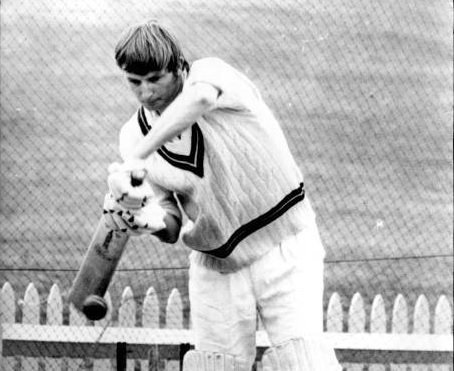
John Benaud
Who has been your funniest teammate?
Greg Gavin. Greg was a wicketkeeper, who like me lived in Campbelltown, and more importantly had a car to take me to and from practice and games during my first year of grade (I had yet to obtain a licence). He also knew every joke and could recount them all the time. We also travelled together from Campbelltown to Sydney Central station each workday.
What was your most embarrassing dismissal in senior cricket?
Like most batsman the day I got a diamond duck, at SCG No 2.
Who was your childhood hero?
Greg Chappell, had that classic batting style that we all wanted to try and emulate.
Who are the three sports people in the world you’d most like to meet?
I love watching American sport and have been lucky enough to attend college football and Major League baseball games during visits to the USA.
I would like to meet some of the great players like Tom Brady from football, Billy Beane and Jack Cust from the Oakland Athletics baseball club, and Shaquille O’Neal, a Hall of Fame 7-foot 2 inch giant.
In 1981, I was transiting through Auckland Airport and the Harlem Globetrotters strolled by. It was a procession of large humans, and it would be nice to meet such a large sportsman.
Some might say, Jack Cust, who is he? Jack was an older rookie for the Oakland A’s baseball team in the early 2000’s. He had a good batting average, but struck out often, despite hitting home runs.
Interestingly, he was before his time as some of the more modern MLB hitters follow the “Cust” model of strike out or home run. I had seen Oakland play in 1988, when they had a competitive team including the “Bash Brothers”, home run hitters, Jose Canseco and Mark McGuire, and have followed them since.

Jack Cust
Who’s your favourite cricket commentator?
On TV I thought Richie Benaud was the “Voice of cricket”. Like all cricketers I always have my car radio on ABC, and Kerry O’Keefe was great, using his unique style of comedy and Sydney humour, and now has moved to commentate on Fox Cricket.
What was your favourite ground to play at?
I enjoyed the Royal Bangkok Polo Club ground, as it was the only ground that I had ever played at that had air conditioning in the change rooms. Cricket in Thailand is played in the dry (hot) season in April to June.
In Sydney, I enjoyed playing at Howell Oval after Peter Leroy became the head groundsman. He turned the bindi into grass and produced good pitches. Peter was originally at Killara Oval and came to Howell in 1978.
In 1980, I worked for a poultry company at Enfield as a salesperson. On at least one day each (Thursday) week I would drive to Howell under the guise of selling product to him and would arrive early to attend practice. Peter moved to Sydney University in 1982, where he managed a team who produced cricket wickets on 4 grounds, before he was appointed SCG curator, where his Oakland A’s cap was seen annually on TV during the Sydney Test. He moved to Vancouver, Canada in the late 1980’s.
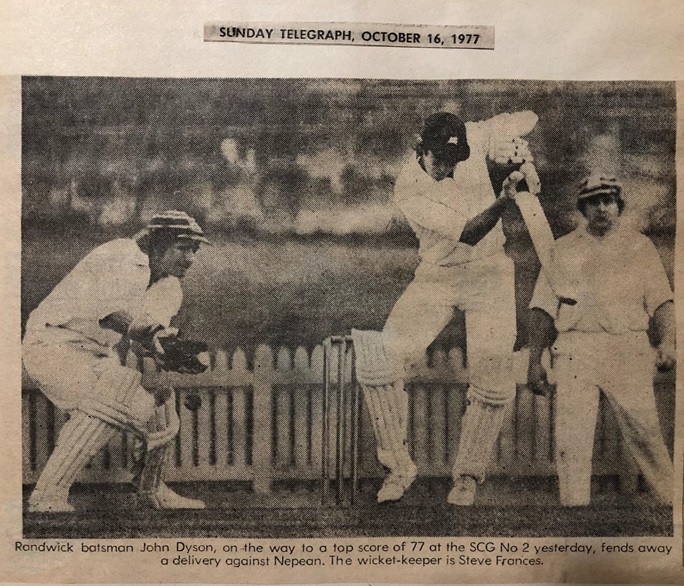
Cutting from Sunday telegraph. Randwick v Nepean, October 15, 1977. The fielder is Ken Robinson.
What there a particular team you especially looked forward to playing against?
I enjoyed playing against Bankstown, as they were usually a great team, but were gracious after the game.
What’s been your most memorable moment in cricket?
The greatest thing about cricket at all levels is the lifelong mateship that develops in teams. Playing cricket allowed me to play in a variety of teams, enjoy the game, and also the social aspects of the game. I also played Rugby League, where the friendship is among the team, while during the game opponents try to cause each other grievous bodily harm.
In 1987, I played for Combined Services against the Primary Club. It was a social match, and there was not a dedicated team change room. I sat and got ready next to former test spinner, Johnny Martin, who lived in Newcastle. He told us about bowling to the 3 W’s but said that Rohan Kanhai was the best bat he bowled to. Dave Colley also played in the match, and I asked if he remembered playing against me 15 years earlier and knocking me over for a duck. Surprisingly he did not remember, but we had a great talk about some of his career.
What’s the best win you’ve been involved with?
Although not playing a game in 1st grade during the season, the first premiership for Penrith in 1978- 79 was great, and although I was 12th man in the rain affected final, the post season trip, followed by the 20- and 40-year reunions, organised by Ron Halse and Tony Radanovic, were great.
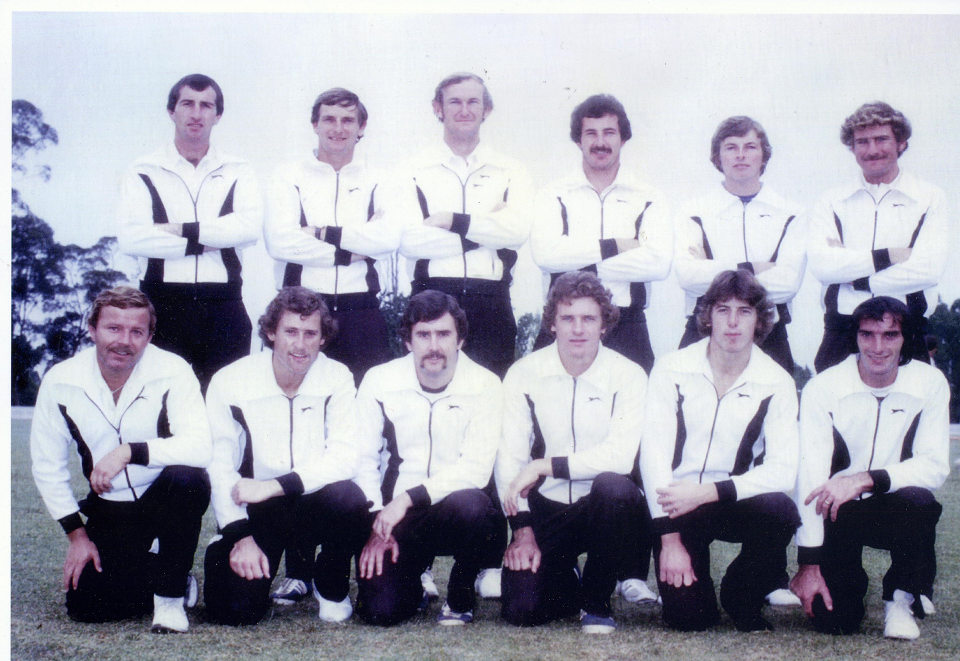
Back Row - Ken Hall, John Benaud (Captain), Peter Clough, Steve Small, Trevor Everest, Steve Frances;
Front Row - Tony Radanovic, Les Andrews, Ron Halse, Gary Donlan, David Laming, Graham Thorpe.
Who are the three players from your playing days at the top of the list for a Saturday afternoon barbeque?
Greg Gavin, Rob Stevens, Mike Gibson, and whoever else wants to come over, with Michael Wholohan as master of ceremonies
What’s the best advice you’ve received?
I was in East Timor in 2001, and we were near (on) the border with Indonesia, where rebel fighters were hiding in unknown forest camps. One day I was visiting a camp when a bomb went off, and a soldier told me “Get down”. Sage advice, although I damaged my knee as I dove into the bunker. I was in the area surveying the Australian Defence Force (ADF) camp for mosquitoes, and to advise command on the risk of soldiers acquiring malaria.
I was lucky to play with 18-year-old Trevor Bayliss, when he first arrived at Penrith in 1980. His subsequent playing career for NSW and coaching career are becoming legendary. In 2014, I was lucky to chat with him at the Gabba (when TB was NSW coach, and Pat Cummins was returning to cricket after an injury), and I asked him about the terrorist attack that his Sri Lankan team had endured in Pakistan. In his laconic way he was glad that none of them were badly injured. I told him that after nearly 30 years in the ADF, I had never been in a life-threatening situation, but he and his cricket team had. As an aside, we must thank the Police and emergency services personnel who are also in harm’s way each day.
What is your occupation?
I am a medical entomologist and worked with the Australian Army Malaria Institute (now Australian Defence Malaria and infectious disease institute) in Brisbane. I conducted field surveillance studies and investigated methods of protection against mosquitoes and was lucky enough to travel to some of the worst places in the world to work, while going to some of the best to visit colleagues and attend conferences.
Are you still involved in cricket and if so, in what capacity?
After finishing cricket, I concentrated on my job, and moved from Sydney to Brisbane. Since retiring from work in 2016, I have enjoyed watching the sons of a few teammates playing at high levels, as well as watching Test and Shield cricket at the Gabba and Allan Border field.
If you were running a state cricket association what would your 2 priorities to ensure cricket in the state remained strong and successful on and off the field?
I don’t have a great knowledge of junior cricket, but coaching kids to develop technique rather than ball striking may help.
In the 1970’s to late naughties, the Sheffield Shield was the focus of players and fans for developing Test players that we all like to watch. I think Test and T20 are going well, but One day Cricket has waned over the last decade. I think the governing body needs to decide if 3 formats of the game are needed. Perhaps reduce 50 over games to a minimum and allow our current heroes to play Shield, Tests and T20 around the world. I would expect players to focus on either red or white ball cricket, but not play both.
Acknowledgement. I would like to thank Mr Adam Morehouse, Cricket ACT Statistician and Historian, and Cricket NSW and Sydney Cricket Association Statistician, who provided details of my 1st grade record, and advising of the ACT career of Professor Ian Mackerras.








